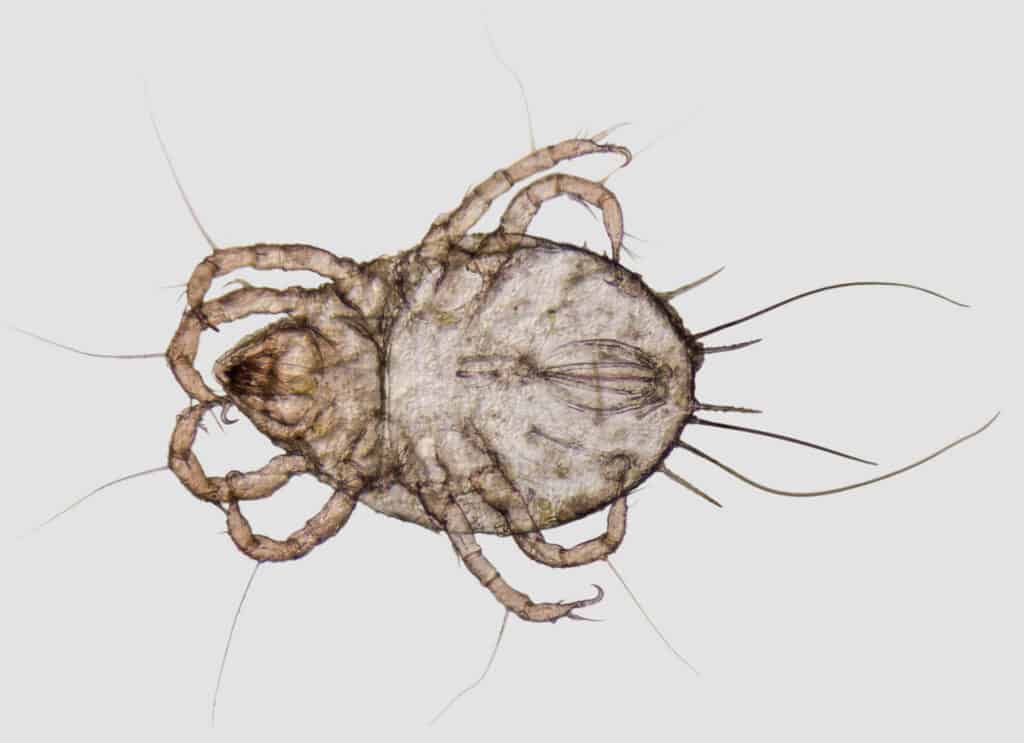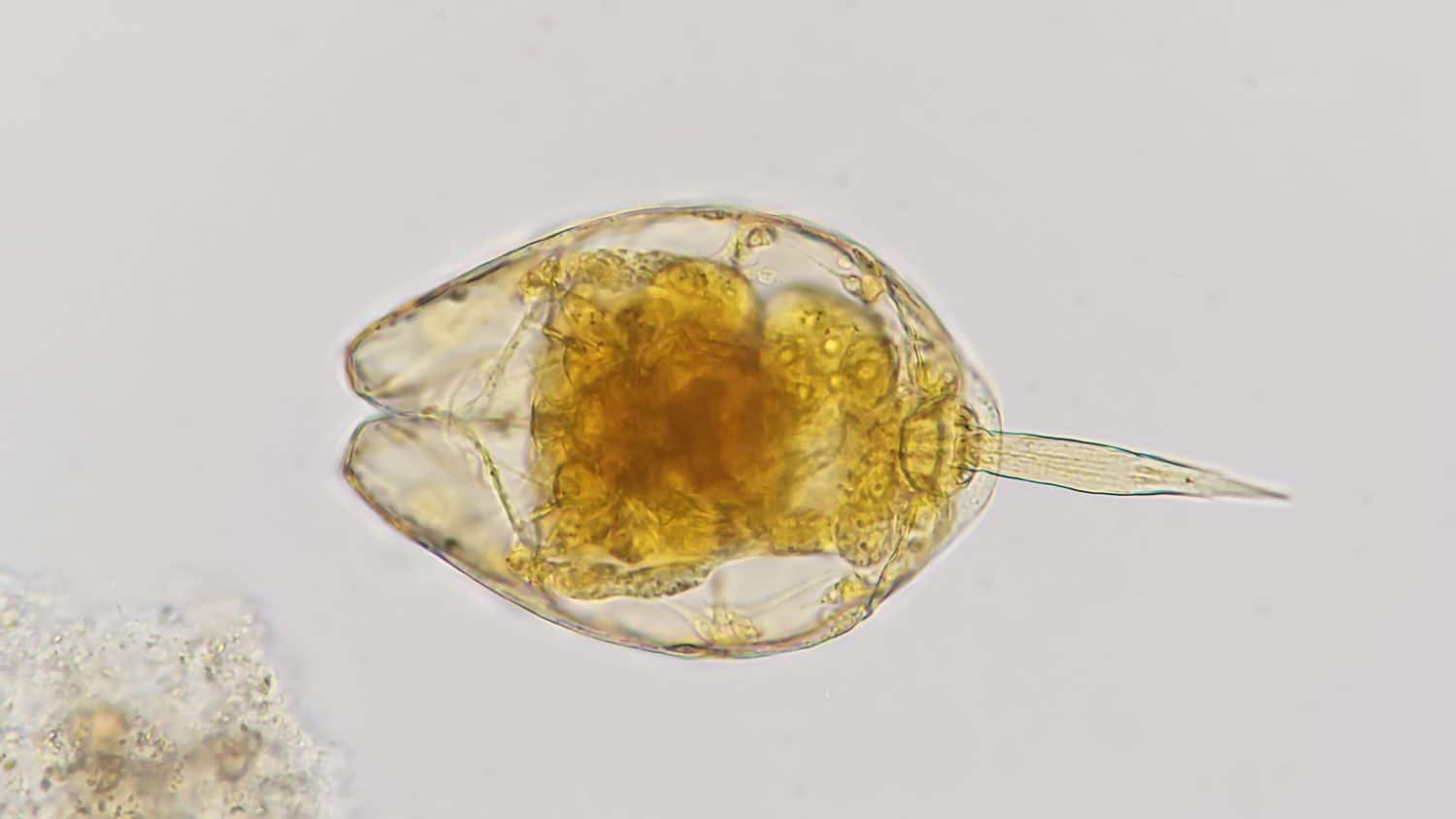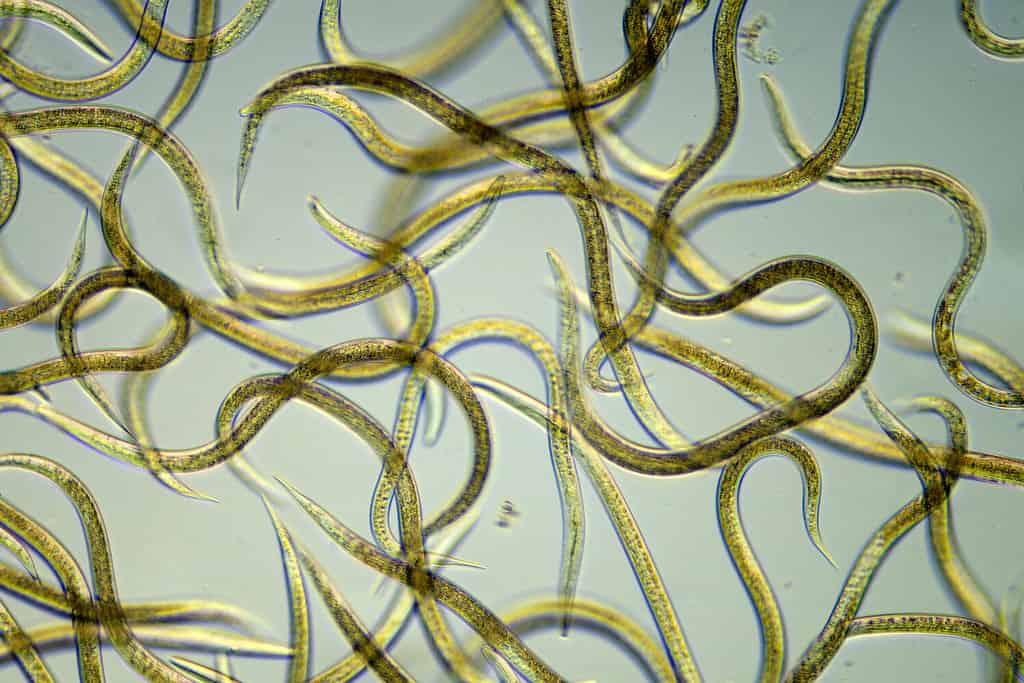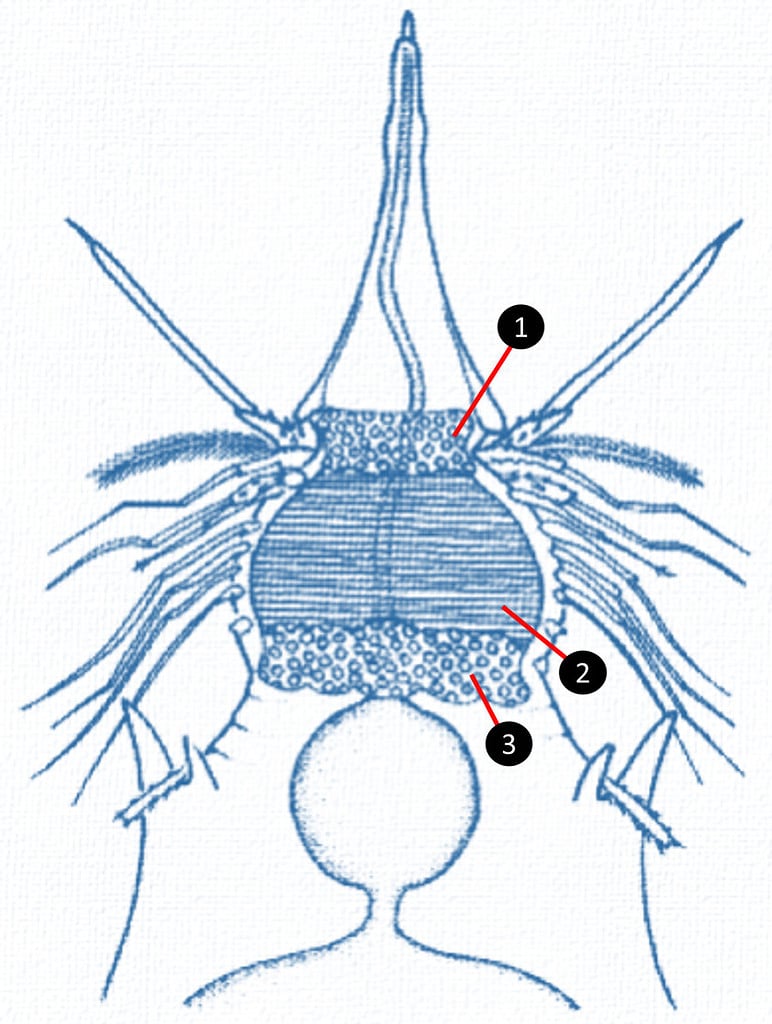From the mammals that roam the Earth to the fish of the sea to the birds of the air, there is no shortage of unique animals to explore. However, did you know that there are more animals on the planet than what meets the eye? Continue reading to explore 6 microscopic animals!
1. Dust Mites

Dust mites are non-parasitic mites that eat dead skin and mold.
©iStock.com/prill
You may have heard of dust mites before, but did you know these are real animals? Dust mites are small, non-parasitic mites categorized into the family Pyroglyphidae. There are 23 different species of dust mite, including the American house dust mite, the European house dust mite, and Mayne’s house dust mite.
Adult dust mites grow to an average of 0.2 to 0.3 millimeters in length. For reference, the thickness of a credit card measures around 1 millimeter. They can be found not only in human dwellings but in the homes of other animals as well. Dust mites eat shed skin flakes, as well as some types of mold.
Although dust mites don’t bite people, they can be dangerous. They can cause asthma, allergies, and even a condition known as oral mite anaphylaxis.
2. Spider Mites

Spider mites may grow to be as large as 1.25 millimeters, although many are much smaller.
©Tomasz Klejdsz/Shutterstock.com
Despite similarities in name, spider mites are not closely related to dust mites. These microscopic animals make up the Tetranychidae family, of which there are around 1,200 different species.
Whereas dust mites may live around humans and animals, spider mites prefer to live on plants. These parasitic mites live on the underside of plant leaves, where they often cause damage by feeding on the plant. Adults can grow to be around 0.9 to 1.25 millimeters in size. While this may be visible to the naked eye, smaller adults, or offspring, are microscopic.
Spider mites are named for the small protective webbing they are able to form. This webbing acts as a protective measure to keep the colony safe from any predators.
3. Tardigrades

Tardigrades are some of the most resilient animals on Earth.
©iStock.com/fruttipics
You may also know tardigrades as water bears or moss piglets. They are one of the most popular microscopic animals, beloved thanks to their cute appearance.
Along with being a microscopic animal, tardigrades are one of the most resilient animals on Earth. On the planet, they can survive some of the most extreme environments, whether that’s extreme temperatures or extreme pressures. They have been found everywhere, from Antarctica to the deep ocean to mountaintops. They are also resistant to life-threatening situations such as starvation and air deprivation. However, the tardigrade’s resiliency goes beyond even what the planet has to offer, having survived encounters with outer space!
When first hatched, tardigrades may be as small as 0.05 millimeters in length or around the same size as grass pollen. Adults may measure anywhere from 0.1 to 1.5 millimeters.
4. Rotifers

Some of the first rotifers were described in 1696.
©Ekky Ilham/Shutterstock.com
Rotifers are named after the Latin words rota, meaning ‘wheel,’ and –fer, meaning ‘bearing.’ This is because of their distinctive appearance, which has earned them nicknames such as wheel animals. These microscopic animals make up the phylum Rotifera.
Some species of rotifers were first described all the way back in 1696 by John Harris, an English writer, scientist, and priest of the Anglican Church. In 1703, other species were described by Antonie Philips van Leeuwenhoek himself, the Father of Microbiology.
Rotifers are most commonly found in freshwater environments. However, some select species may survive in saltwater. On average, they grow to be between 0.1 and 0.5 millimeters in length. However, they can be as small as 0.05 millimeters as adults to as large as around 2 millimeters. The exact size often depends on the type of rotifer.
5. Nematodes

Parasitic nematodes can infect other animals.
©D. Kucharski K. Kucharska/Shutterstock.com
If you ever watched SpongeBob SquarePants, then you may be familiar with nematodes. However, these interesting microscopic animals appear different in real life than in this show.
Nematodes are roundworms, or eelworms, within the phylum Nematoda. There are many different types of nematodes, some of which live vastly different lifestyles. For instance, many species of nematodes are free-living. This means that they engage in locomotion on their own and hunt their food, which happens to be other microorganisms.
However, other types of nematodes are parasitic. These parasitic species can cause a condition known as soil-transmitted helminthiasis, a roundworm infection.
Nematodes may grow to be anywhere from 0.1 to 2.5 millimeters long.
6. Loricifera

Although small, Loriciferans have many features in common with other animals, including a mouth.
There are 43 described species of Loricifera. However, over 100 other specimens have been collected but not yet described, leaving dozens of members of this phylum. Of the known species, adults typically range in size from 0.1 to 1.0 millimeters.
At least three species have shown the ability to live in an oxygen-free habitat.
Summary of 6 Microscopic Animals
| Microscopic Animal | Size (Millimeters) |
|---|---|
| Dust Mites | 0.2 to 0.3 |
| Spider Mites | 0.9 to 1.25 |
| Tardigrades | 0.1 to 1.5 |
| Rotifers | 0.1 and 0.5 |
| Nematodes | 0.1 to 2.5 |
| Loricifera | 0.1 to 1.0 |
The photo featured at the top of this post is © iStock.com/dottedhippo
Thank you for reading! Have some feedback for us? Contact the AZ Animals editorial team.







